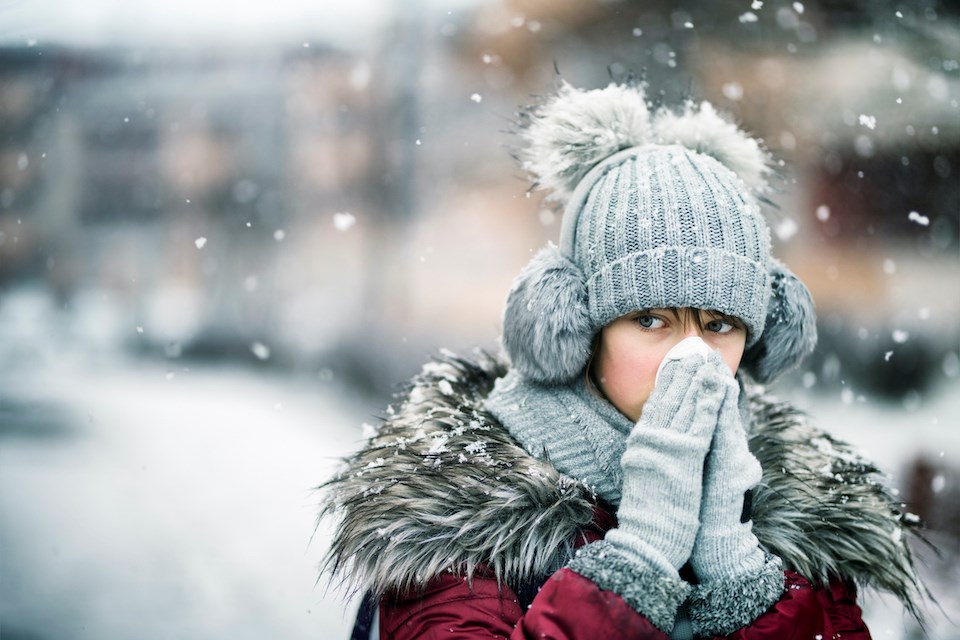Metro Vancouverites may face unseasonably cold weather as February continues thanks to the stratospheric polar vortex.
The polar vortex is an extensive area of low pressure and cold air surrounding both the Earth's poles, weakening in summer and strengthening in winter. The term "vortex" refers to how the air flows counter-clockwise closely around the poles. During the winter, the polar vortex often expands, plunging frigid air southward with the jet stream, according to the National Oceanic and Atmospheric Administration (NOAA)
The polar vortex is responsible for many severe Arctic outbreaks across Canada and the United States, including the current one in the Lower Mainland. Temperatures are more than -10 C below seasonal averages on some days and nights, producing the ideal conditions for ample snowfall when a moist Pacific system moves into the region.
Metro Vancouverites experienced the first true snowfall of the season on Sunday, Feb. 2, although amounts varied across the region from under 10 cm to upwards of 24 cm.
A cold arctic airmass was in place for several days preceding the snowfall and will continue to linger in the area for at least another week to 10 days. However, it could last far longer.
Metro Vancouver weather forecast includes more unseasonably cold temperatures
Environment Canada Meteorologist Alyssa Charbonneau told V.I.A. that the unseasonably cold temperatures may continue through the next couple of weeks.
While the Arctic airmass continues to funnel frigid air into the region, any moisture will fall as snow rather than rain. There are more opportunities for snowfall on Friday night and overnight on Saturday into Sunday.
The Weather Network says the polar vortex has "shifted to this side of the pole," producing below-average temperatures in Western Canada. Additionally, a "healthy snowpack" in B.C.'s coastal mountains acts as a "natural coolant," lowering already frigid temperatures.
The jet stream typically moderates B.C.'s south coastal temperatures, with Pacific onshore flow limiting Arctic air intrusion. However, these winds are calmer this week, pushing the polar jet stream as far south as California, "leaving Western Canada exposed to extreme cold," according to the report.
Another Arctic outbreak is also possible mid-month, providing more opportunities for snowfall and colder-than-average temperatures.
Stay up-to-date with hyperlocal forecasts across 50 neighbourhoods in the Lower Mainland with V.I.A.'s Weatherhood.



